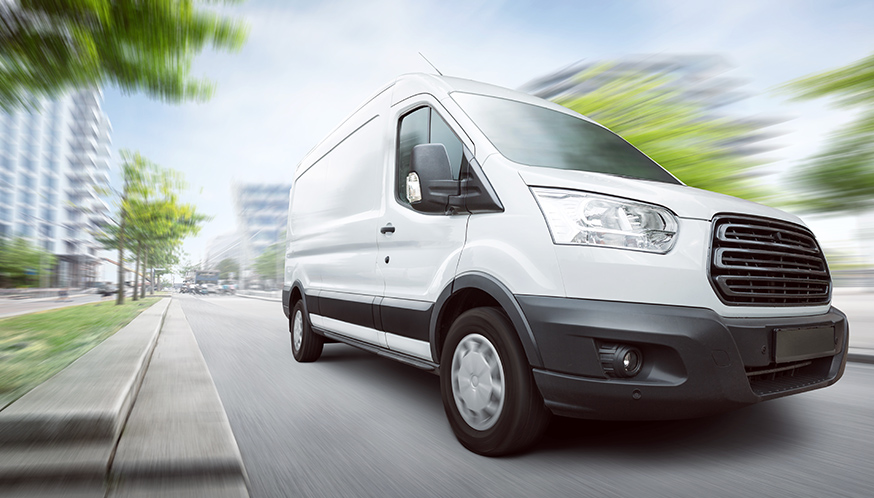-
What We DoWith our integrated fleet services, you get the entire fleet management and leasing market from a single source and can purchase, finance, manage and sell your fleet cost-effectively. And you only ever pay for what you actually use.Overview
-
ResourcesWe have a lot to share. Browse our resources library for current insights, data, strategies, and success stories from our own experts in their respective fields.Overview
-
About UsWhen Holman was founded in 1924, we set something positive in motion. Our consistent focus on people and our commitment to integrity make us who we are today.Overview
 Join Our TeamWe’re not just in the automotive business, we’re in the people business. Join us for the ride.Browse Careers
Join Our TeamWe’re not just in the automotive business, we’re in the people business. Join us for the ride.Browse Careers
COMMERCIAL VEHICLE LEASING
Commercial Vehicle Leasing
Although many companies maintain fleets, they don’t take advantage of modern financing options. However, doing so can be worthwhile for many reasons.

Free Your Commercial Vehicle Fleet From Unnecessary Costs
In the past, vehicle leasing typically meant giving up your freedom and cost transparency. That’s why sectors such as the construction industry or the skilled trades often preferred to buy. Presently, however, there are attractive alternative offers. With our open-end leasing FlexLease, there is hardly any need to compromise on fleet strategy, because:
- The useful life of the contracts can be extended or shortened without any problems, as it does not have to be specified when the contract is signed.
- The number of kilometers driven does not have to be fixed in advance. This is often very convenient, as the exact usage of a fleet is difficult to predict.
- The leasing contract of the vehicle can be discharged at any time after three months by paying off the remaining debt.
- There is no depreciation charge, as it does not reflect the loss of value. You can continue to drive the vehicle, sell it yourself or leave the sale to us. In any case, the proceeds are yours.

Advantages of Holman Commercial Vehicle Leasing
- If you have more complex fleets, buying new commercial vehicles can be very expensive. It preserves liquidity to lease your commercial vehicles instead of buying them.
- Leasing brings many other advantages besides the financial ones. With Holman FlexLease you can choose leasing that is similar to the idea of purchasing.
- Due to the fixed monthly leasing installments, which are typical for leasing, you benefit from a high degree of planning security.
- With our commercial vehicle leasing, companies can regularly purchase the latest vehicles for their fleet without tying up a lot of capital.
- Most new commercial vehicle models are offered with the latest technologies, making them more efficient and reliable. This way, you always have a state-of-the-art fleet.
- With FlexLease you can drive longer without any problems. After paying off the remaining debt, the vehicle becomes your property. You can continue to drive it, sell it yourself or leave the sale to us. In any case, the proceeds of the sale are yours.

We will help you to find a suitable solution - feel free to contact us!
CONTACT US
×
Commercial Vehicle Leasing Frequently Asked Questions
-
How does FlexLease work?
- A flexible contract is entered into when the lease is signed. Instead of intransparent “calculations,” a repayment plan is agreed upon that is as transparent as possible. Since not every car is used in the same way, there is also an optimized, individual financing contract for each vehicle.
- During the term, open-end leasing offers reliably constant monthly payments, with all benefits clearly defined. The term is flexible from as little as three months. After this time, the contract can be terminated at any point by paying off the remaining debt, making the vehicle yours.
- At the end of the term, there is no depreciation charge with us, as it does not reflect the loss in value. You can continue to drive the vehicle, sell it yourself or leave the sale to us. In any case, the proceeds are yours.
-
What do I have to consider when leasing a commercial vehicle?
Leasing helps you preserve your company’s liquidity – at least that’s the goal. But you also have to choose the right financing model, otherwise you could end up paying too much. Hidden items in the fine print and non-transparent, full-service rates often turn out to be cost drivers.
Classic closed-end leasing, also known as “kilometer leasing,” is particularly popular in Germany. Closed-end commercial vehicle leasing contracts appear to be favorable and clearly regulated. However, the company is often bound by a rigid, predefined contract with fixed mileage parameters. In the bidding process, attention is generally paid only to the most favorable lease rate. But the devil is in the details – or more precisely – in the contracts, because numerous costs can arise in closed-end leasing that are not always apparent at first glance in the contract clauses. The additional services such as maintenance, repairs, tires, insurance, etc. are included in the rate. This poses a simple, but at the same time unsolvable problem for the person responsible for the costs. Even when the contract is signed, the customer cannot understand how the rate is made up, whether the services are priced too high or whether the calculation is based on a residual value that is too low. Finally, any discrepancies are sanctioned by the lessors through contractual penalties and expensive rewrites.
But is this really necessary? Or are there now alternatives on the market that offer more flexibility and transparency in the commercial vehicle leasing sector?
The open-end model can be more financially attractive, resulting in an “open” statement of contract parameters and billing on an actual cost basis. The lessee can flexibly adjust the financing period to his or her needs, and can redeem the leasing contract at any time after three months by paying off the remaining debt, without having to pay penalties or receiving hefty bills for tiny scratches.
Roughly speaking, the main differences between closed-end and open-end commercial vehicle leasing are flexibility and the arrangement of the sale proceeds. In this regard, open-end leasing does not require you to specify the useful life or the number of miles driven in advance. This is often very convenient, as the exact usage of a commercial vehicle fleet is difficult to predict. In open-end leasing, this is quite easy, but in closed-end leasing it is only possible under certain conditions.
What the most important decision-making criteria are when choosing the respective financing model and what advantages and disadvantages the individual models have, we have clearly compiled for you in the following table:
-
What is the best solution for commercial vehicle leasing?
To create more maneuver-room for your business, Holman has developed a flexible open-end full amortization contract – FlexLease – that focuses on maximum transparency in the amortization schedule instead of non-transparent calculations. During the term, open-end leasing offers reliably consistent monthly payments for your commercial vehicles, with all benefits clearly defined. The term is flexible from as little as three months. After this time, the contract can be terminated at any time by paying off the remaining debt. No contractual penalties for premature termination. No calculation of damages. At the end of the term, there is no depreciation charge, as it does not reflect the loss of value. In combination with freely selectable and transparently billed services such as maintenance and repair, your total cost of ownership (TCO) can be systematically reduced.
Decide on a leasing offer and a leasing model that currently best suits your mobility needs and let our fleet management experts advise you. We’ll be happy to help you calculate the benefits of your commercial vehicle lease. Even if the full amortization contract is not the optimal solution for your commercial vehicle, we will find the right type of financing for you. You can count on that.
-
Is commercial vehicle leasing also suitable for tradesmen, for example - panel vans?
Yes, Holman’s commercial vehicle leasing is also suitable for tradesmen, and the benefits can be used in any industry. It is important to distinguish whether you drive, for example, only a panel van or a van, or maintain an entire fleet. Single vehicles and mini fleets are usually leased through the manufacturer. At Holman, we specialize in fleets of 100 vehicles or more.
-
Is commercial vehicle leasing also suitable for the self-employed?
Yes, commercial vehicle leasing is also suitable for the self-employed, and the benefits can also be enjoyed by sole traders. Commercial customers and the self-employed rarely maintain a large fleet, but usually only need one car. Single vehicles and mini fleets are usually leased as new cars through the manufacturer or the house bank, but there are also other providers. A fleet manager is not common due to the small number of vehicles.
Related Services

Electromobility
Together with you, we develop a long-term sustainability plan for your fleet and support you in the implementation to strategically convert your fleet from combustion engines to e-vehicles in this way.

Van Leasing
Free your van fleet from restrictions with open-end leasing? We advise you on this path.

FlexLease
FlexLease is an open lease with flexible contracts. The differences to the other leasing variants lie in the flexibility and in the regulation of the sales proceeds.

It looks like you've navigated to our Holman DE-EN website and are located outside of this region. Would you like to continue or select a different region?
✕


